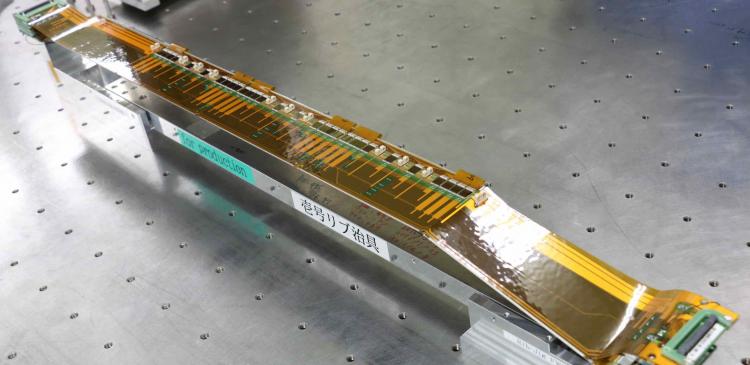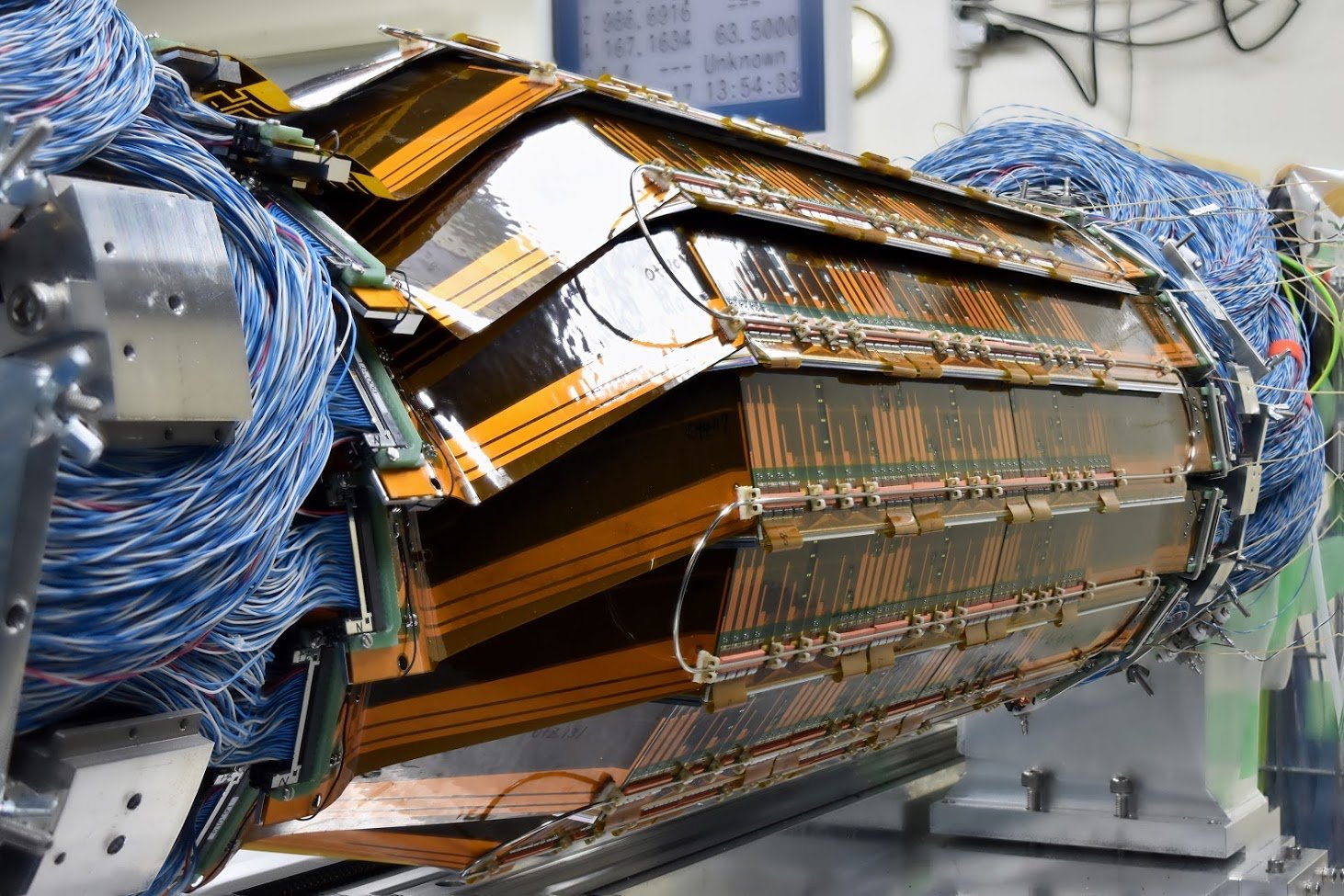Takeo Higuchi tests electrical quality to build one delicate panel, called a ladder, of the Silicon Vertex Detector.
A team from the Kavli Institute for the Physics and Mathematics of the Universe (Kavli IPMU) completed the fourth and most outer layer of the Silicon Vertex Detector (SVD) in May 2018. This layer consists of 16 delicate panels, called ladders, that will pinpoint the locations of scattered particles from an electron and positron collision inside a particle accelerator with 35-micron accuracy. Such precision is essential for detecting particles potentially new to science. If they exist, they will appear in the sensitive detector in precise locations unpredicted by current theories.
Experimental physicists smash particles together at very high speeds in order to study the most fundamental properties of matter that govern everything from subatomic particles to the largest galaxy. But unlike many researchers in Europe or the US who collaborate with engineers to make detectors, Kavli IMPU physicist Takeo Higuchi says Japanese researchers tend to do the majority of detector-building themselves.
“We want to do the physics, and that is why we made this detector,” he said.
The construction of the SVD took six years. Why so long?
"It's simply very, very difficult," Higuchi said.
A finished ladder is roughly 70 cm long, and is assembled from silicon sensors. These sensors are lined with electrodes called strips. When a particle passes through a sensor, the strip closest to its point of contact sends out an electric signal.
For the detector to work without fault, it requires clear-cut wire bonding and just the right amount of glue. Too much glue and it could seep out over the electrodes. Too little and the ladder could fall apart. This alone took two years to perfect, plus an additional two years to assemble a ladder with good mechanical precision.
The ladders are then arranged in a lantern shape, completely enveloping the interaction area inside the particle accelerator to ensure the detection of all particles that result from a collision. The gap between two ladders at any point is less than one millimetre, and the distance between two sensors is a mere 100 microns, meaning that, if any ladder is out of line, the sensors risk coming into contact and breaking.
Higuchi says developing a good ladder was not the most difficult part. It was the final two years of making 19 of them (16 for the accelerator and three spares).
"Making many of the same thing is difficult. Humans forget. Or they get lazy and are tempted to take shortcuts," Higuchi said.
To minimize any mistakes, the team wrote down everything they did in a 200-page manual, and constantly added notes. All versions of the manual, which total more than 4,000 pages, are now a precious memento locked away safely at Japan’s High Energy Accelerator Re- search Organization (KEK), where the detector currently resides.
The SVD was made for the international Belle II Experiment, hosted by KEK. The experiment, scheduled to begin data analysis by February 2019, will search for physics unpredicted by the Standard Model of particle physics. Current theories have successfully predicted many phenomena and particles, but they do not give an explanation for the nature or identity of dark matter and dark energy, which makes up most of the universe. Finding new physics that helps solve those mysteries would help move us closer to explaining nothing less than the origin of the universe.
For further information, contact:
Associate Professor Takeo Higuchi
Kavli Institute for the Physics and Mathematics of the Universe
University of Tokyo
E-Mail: [email protected]





